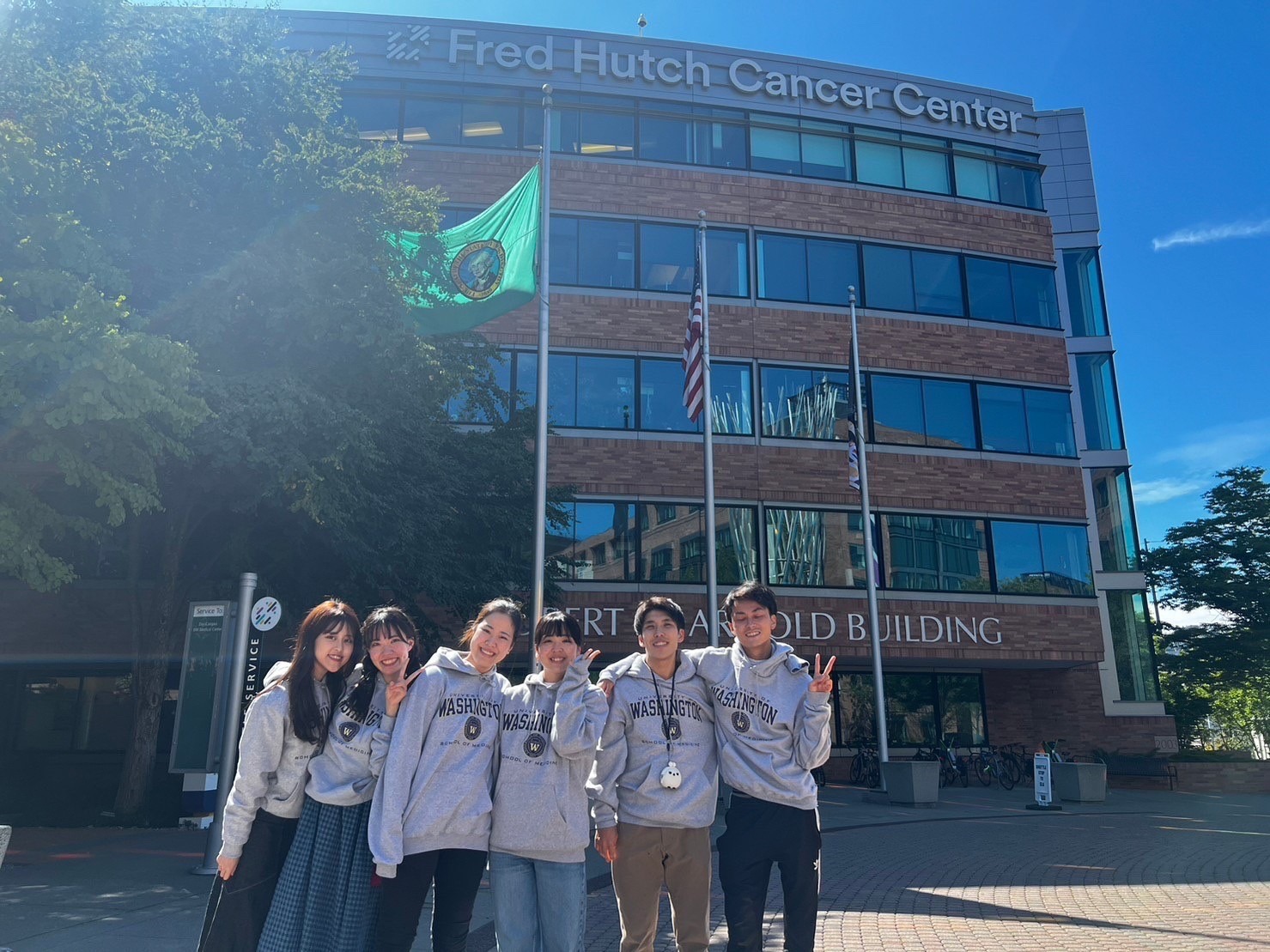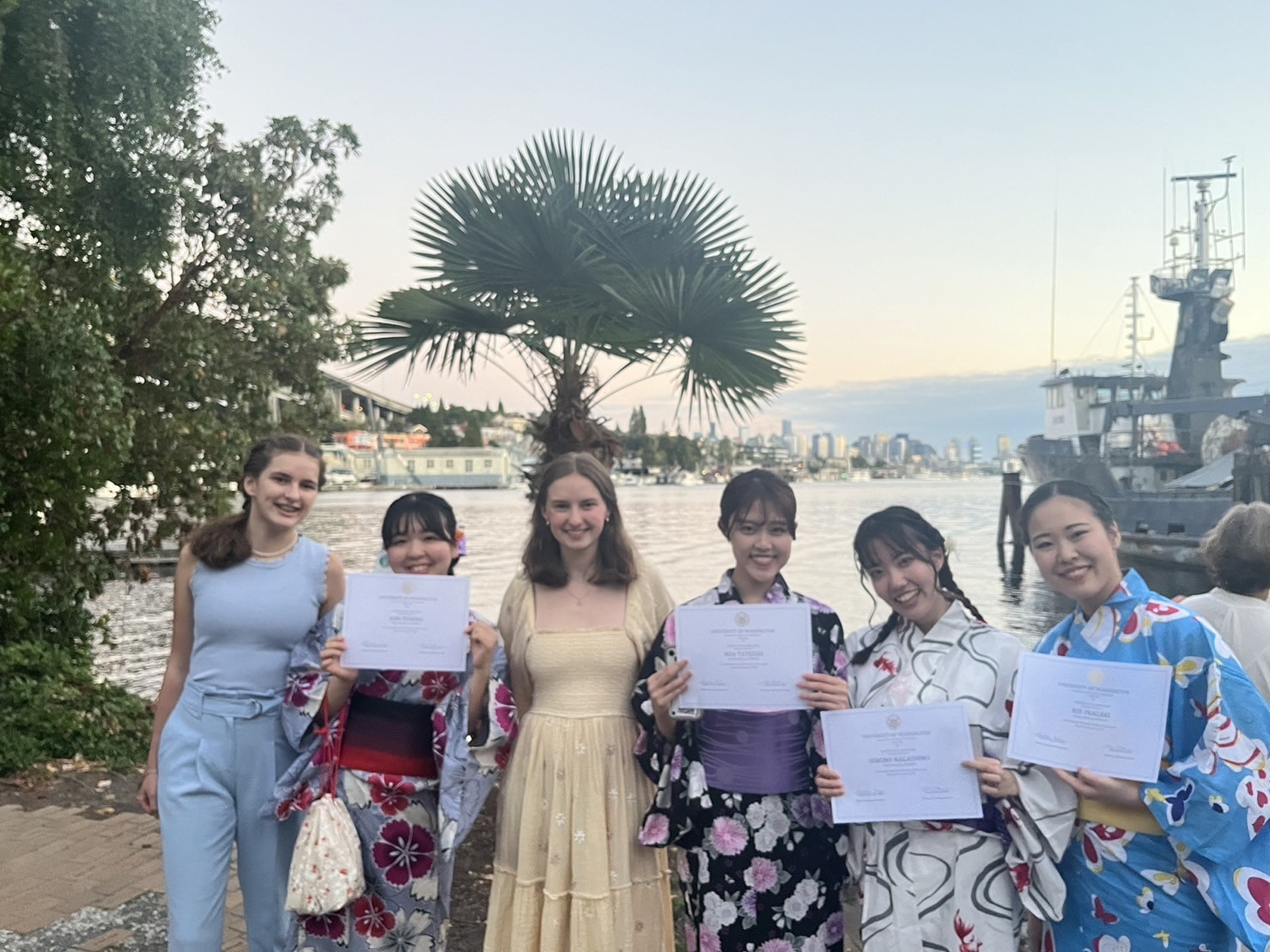International and Domestic exchange
Aimi Fumino (5th grade)
After completing training at the University of Washington
I participated in the Bioethics Program at the University of Washington for one week from August 5th to 12th. There were two reasons why I applied to this program. First, I have always dreamed of studying abroad since I was a child, and I wanted to try it if I had the opportunity. I thought it would be a great opportunity to test how well I could use the medical science I learned over the past five years and my English skills in discussions abroad. Secondly, I am interested in obstetrics and gynecology, and I felt that there are many ethical issues involved in studying obstetrics and gynecology, which is involved in human birth. I thought that the bioethics I learned in this program would definitely be useful to me as I build my career as an obstetrician-gynecologist. I would like to report on what I learned during my participation in the program at the University of Washington.
During the program, we attended a total of 14 lectures, all of which were excellent lectures given by professors with great achievements. For each lecture, we discussed the similarities and differences between medical care in the United States and Japan.
First of all, I learned that the most basic way of thinking when deciding on medical treatment for patients is called "The 4 boxes," and that patients are evaluated based on four pillars: "Clinical Indication," "Patient Preferences," "Quality of life," and "Other factors." Unlike in the past, both Japan and the United States have a commonality in that they place importance on patients' wishes and QOL. However, I strongly felt the importance of religion and culture as a difference. America is a multi-ethnic country where many religions and cultures coexist and are respected. In addition, the medical systems of the two countries are very different, and I felt that the fact that financial issues play a major role in choosing medical treatment is also a difference from Japan.
What surprised me about medical care in America is that Family Doctors are in high demand and widely known in America. America is a vast country, and in many areas you have to drive 5-6 hours to get to a large hospital. In this context, Family Doctors support patients at every stage of their medical care. They are also involved in childbirth, and can be involved in the medical care of patients from childhood to adulthood. Many people go to Family Doctors before going to a general hospital, and Family Doctors are in high demand because they cover all diseases that can occur in daily life, so patients don't have to go to many medical departments or far away hospitals. Japan has excellent access to medical care, and the demand for Family Doctors may not be as high as in America, but I was very interested in the fact that they have a lot of contact with people and can be involved in the patient's life for a long time.
I also had the opportunity to talk to students attending the University of Washington School of Medicine, and I felt the difference between medical education in the United States and Japan. In the United States, students graduate from a general university and then attend medical school, and they learn medicine during the three years of medical school. In the first year, students acquire medical knowledge, and at the same time, they go to the ward for training every other week to learn medical interviews and procedures. By doing ward training over a long period of time, students will gradually become able to do things that they cannot do at first, and they will become ingrained in them. In addition, volunteer work is also considered important in addition to studying when entering any university. I felt that volunteer work makes students feel happy to act for others, and that it becomes a normal part of society, and that they will acquire the ability to act for the medical care of society. It was very interesting to see that even in the same field of education, different countries place importance on different things.
In addition, the University of Washington School of Medicine has launched a multistate medical education program called WWAMI, which stands for Washington, Wyoming, Alaska, Montana, and Idaho, and medical students at the University of Washington School of Medicine serve each of these states. Students at the University of Washington School of Medicine can experience all kinds of medical care, from internships at a level 1 trauma center in Seattle, Washington, to a small primary care clinic in Libby, Montana, to working with Alaska Natives in Anchorage, Alaska. WWAMI's ultimate goals are to make publicly supported medical education more accessible to citizens of the Northwestern United States, to increase the number of doctors who provide primary care, to provide community-based medical education, and to broaden medical education after graduation. In the United States, where medical licenses are required by state, I thought that interstate internships would give medical students a variety of perspectives, making it a very meaningful program for medical students.
During my stay, I visited many hospitals. One of them, Harborview Medical Center, is the only trauma and burn center designated as Level 1 in Washington State, and serves as a regional trauma and burn referral center for Alaska, Montana, and Idaho, and as a disaster response and disaster management hospital for Seattle and King County. There is also a heliport, and patients are brought in from faraway places such as California. The area where the patients are brought in and the size of the hospital are all very different from Japan. It is multilingual, with interpreters always on standby in 13 languages, and 150 languages are currently spoken in the hospital. I felt that the way it is designed to allow anyone to use it without difficulty regardless of race or language is unique to America.
I was also able to talk to the doctors who came to the lectures at the welcome party, the home party at Dr. King's house, and the farewell party on the last day, and I was able to learn about the differences in medical care between our countries and how we should respect each other even in those differences. It was a very good experience that changed my awareness. I would like to thank the teachers at Hirakata Rehabilitation Center for creating such a wonderful opportunity, Dr. King and the other members of the Washington University School of Medicine, Yoshiko who guided us on site, Yoko who acted as our interpreter, and everyone else who was involved in this program. I am very happy to have had such a wonderful experience and made so many memories during my time as a student. I would like to make use of this experience in my career as a doctor. Thank you very much.

